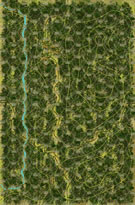|
Milne Bay Scenario 1: Milne Bay - The Landing Kokoda Campaign #25 |
||
|---|---|---|
| (Attacker) Australia | vs | Japan (Attacker) |
| Formations Involved | ||
|---|---|---|
| Australia |  |
61st "Queensland Cameron Highlanders" Infantry Battalion |
| Japan |  |
5th Kure Special Naval Landing Force |

| Total | |
|---|---|
| Side 1 | 0 |
| Draw | 1 |
| Side 2 | 2 |
| Overall Rating, 3 votes |
|---|
|
3
|
| Scenario Rank: --- of 913 |
| Parent Game | Kokoda Campaign |
|---|---|
| Historicity | Historical |
| Date | 1942-08-26 |
| Start Time | 01:45 |
| Turn Count | 12 |
| Visibility | Night |
| Counters | 12 |
| Net Morale | 2 |
| Net Initiative | 0 |
| Maps | 1: 35 |
| Layout Dimensions | 43 x 28 cm 17 x 11 in |
| Play Bounty | 140 |
| AAR Bounty | 165 |
| Total Plays | 3 |
| Total AARs | 2 |
| Battle Types |
|---|
| Inflict Enemy Casualties |
| Meeting Engagement |
| Road Control |
| Urban Assault |
| Conditions |
|---|
| Terrain Mods |
| Scenario Requirements & Playability | |
|---|---|
| Kokoda Campaign | Base Game |
| Introduction |
|---|
|
To establish air support and supply bases for the forces fighting on the Kokoda Track, at 2200 on the evening of August 25th the Japanese landed around 500 men on the north shore of Milne Bay. While the bulk of the troops set about establishing a base, a patrol accompanied by two tanks moved west toward the K. B. Mission. At 0145 on the morning of August 26th, the patrol encountered an Australian patrol from 61st Battalion. |
| Conclusion |
|---|
|
Although the light Australian forces had no weapons capable of damaging the tanks, the SNLF patrol was content to engage in a firefight and locate the enemy. Both sides broke off at dawn and returned to report. The mission of peacefully building airfields and support facilities had changed for both Australians and Japanese. |
| AFV Rules Pertaining to this Scenario's Order of Battle |
|---|
|
| Can't Touch This |
|---|
|
A company of Japanese SNLF troops marches down a jungle trail to a village where it faces a company of Australian Militia. But there is something extra in this scenario. The Japanese force also includes a reduced [platoon of T-95 tanks. Worse news for the Australian defenders - they have no antitank weapons, and by scenario special rule, even assault combat cannot inflict a step loss or morale check on the tank. All the Australian player can do is prevent the tank from leaving an assault hex. In this scenario, the Australians try to fight a delaying action along the trail east of the village and are successful at holding the tank in a series of assault hexes. But facing a morale deficit and Japanese assault column shifts, the Australians start to lose steps in the assaults and just run out of troops two turns before the end, ending up with an iverwhelming Japanese victory. |
| 1 Comment |
| The Landing |
|---|
|
This is a small battle with a company of Australian infantry commanded by two officers defending the trail and local village against a Japanese company from the 5th Kure SNLF supported by a Type 95 tank section. The Japanese have the higher morale, 9/8 to the Australians at 7/6, the scenario takes place at night with visibility down to one hex, jungle disorientation in effect as well as FOW. Things did not start off well for the Japanese, their lead platoon was eliminated by opportunity fire at first contact and the follow up platoon was demoralized, the only saving grace was the tank section could not be harmed. For the next 8 turns the Aussie forces won the initiative and slowly fell back leap frogging over their forces but they could not fall back for the entire game and expect to win. The Aussies held up better than expected since their morale is 7/6, but the key was the two good leaders both with a morale modifier which helped when needed. FOW did not come into play for this scenario due to the small force size and limited points of contact. In the end it was control of the three village hexes by the Australians that helped them tip the scales into a draw instead of a Japanese minor victory. VP totals were Japanese 12 vs 13 for the Aussies. |
| 0 Comments |

 KoCa024
KoCa024 











The Australian records indicate that they could do nothing against the tanks. I found that the only effective approach to stopping them was to double stack with a unit directly behind the first one on the trail. This immobilized the tank and forced the Japanese player to consider leaving the trail which is the only way to kill the tank.